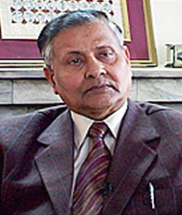General Mirza Aslam Beg
The factors determining the geo-political dynamics of our region have a name. It is Modi’s concept of ‘Act Asia’ and Obama’s idea of ‘Pivot to Asia’. In fact both the concepts eminate from their failed post 9/11 Afghanistan policies: The 2005 Indo-US Strategic Partnership was aimed at establishing Indian hegemony over the territories from Afghanistan to Bangladesh. For this purpose Afghanistan was declared a part of South Asia, giving a free hand to India to use Afghan soil as the base for the “Coalition Spy net-work”, against all the neighbors of Afghanistan, particularly Pakistan. Consensus was also reached on a civilian nuclear deal, and to get the deal, India voted against Iran’s nuclear programme and agreed to jointly work with USA and its coalition partners, to contain and curb the rising Islamic extremism in the region. US and the coalition partners, failed on all the counts.
Modis’ present strategic embrace of US adds new dimensions to geo-political dynamics of the region. Being a “non-aligned country, India is moving away from its encrusted ideology of non-alignment, to a multi-aligned approach.” India has now been drawn into a closer long term military relationship with USA in a swathe, extending from the Gulf of Eden to the Straits of Malacca. A Defence framework agreement was renewed, for ten years and the Defence Technology and Trade agreement was signed to help India build aircraft carrier. India has also entered into the Asia-Pacific Economic Cooperation Forum, dominated by US and Japan and will be actively engaged “to counter Chinese New Silk Road Partnership, based on Euro-Asian land bridge and the String of Pearls connectivity, stretching from the Middle East to China.”
Modi’s prime objective is to achieve “economic growth that could reach the poor, not by the pernicious limitations of the trickle-down theory, but by a trickle-up theory, in which swift financial empowerment of the poor is matched by the goods manufactured in India. Obama wants a piece of India’s rising growth and a dominant role in Asia. US technology can help it along. Modi knows that.” Therefore, India and US now have set the goal of increasing trade from the present US$ 100 million to US$ 500 million, a year, matching with that of China. A significant outcome of the visit is the break through in finding the formula to remove the discord over India’s nuclear liability laws which has exited since 2005.
Despite the strategic embrace with USA, India’s policy of multi-alignment is pragmatic and far more practical, which will continue to draw India towards China and Russia, exerting pressure on “America’s ability to adjust to a multi-polar world shaped by Delhi and Washington, although the rise of India is a geopolitical fact of our time and the manner in which it rises is critical to the future of the global order.”
The geo-political demands of Pakistan made it a preferred American ally since 1950s, the period of cold war and got a bitter experience of the strategic embrace. Pakistan was used by the stronger partner when it suited them and was abandoned, when not needed. The worst happened in 2001 when the American mind-set demanded from Pakistan: “You are either with us or against us, forcing Pakistan to take the most immoral and illogical decision to join America’s war on Afghanistan, a brotherly and friendly country.” As a consequence Pakistan suffered immensely and continues to suffer even now.
The recent developments are ominous for Pakistan, particularly at this point in time, when the political turmoil within and the war on our north-western borders, make the situation more complex. Yet there are some positive indications which demand very careful policy decisions and initiatives to mould these opportunities into assets. It is but logical to assume that, the declared objective of Indo-US Strategic Partnership, to contain and curb the rising economic and military power of China, “has set an alarm in China’s mind, facilitating a defacto understanding between China, Pakistan and Russia, who have recently developed significant military and economic relations”, strengthening Pakistan’s external security dimensions. Moreover, the Afghan President Ashraf Ghani, recently declared at the Heart of Asia Conference at Beijing, that “the future of Afghanistan will be determined in a very inclusive manner and in close coordination with its six neighbors of the Inner Circle – namely, Pakistan, Iran, China, Russia and the Central Asian countries. He leaves India and US out, whose post 1990 machinations had plunged Afghanistan into the civil war. The Afghans are now determined not to be cheated again and will take matters into their own hands, for peaceful transfer of power, and a peaceful border with Pakistan.
The present situation also offers the opportunity to Pakistan, to construct a new narrative of Pak-US relationship, based on mutual self respect and interests, knowing the fact that, “the US isn’t just another country. It is a super power that has made the world a more dangerous place. Where ever the US has recently intervened it has left a mess, worse than the earlier dictators did, as in Afghanistan, Iraq, Libya and Syria.” It is therefore imperative for Pakistan to loosen the US bear hug, and opt for a more friendly and comfortable embrace, to breathe freely.
General Aslam Beg is one of the most authoritative analysts in Pakistan.
He can be reached at friendsfoundation@live.co.uk
